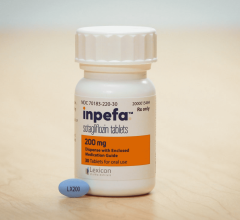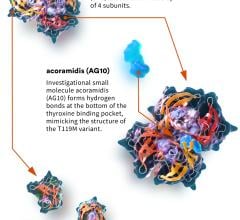February 26, 2015 — Patients who experienced a certain type of heart attack who received the anticoagulant fondaparinux had a lower risk of major bleeding events and death compared to patients who received low-molecular-weight heparin (LMWH), according to a study in the February 17 issue of the Journal of the American Medical Association (JAMA). This was found to be true both in the hospital and after six months; however, both groups had similar rates of subsequent heart attack or stroke.
Reducing bleeding events in patients receiving antithrombotic therapy is important since bleeding events are associated with increased mortality. Fondaparinux was associated with reduced major bleeding events and improved survival compared with LMWH (a class of anticoagulant medications) in a large randomized clinical trial involving patients with non-ST-segment elevation myocardial infarction (NSTEMI). Large-scale experience of the use of fondaparinux versus LMWH outside of a clinical trial setting has been lacking, according to background information in the article.
Karolina Szummer, M.D., Ph.D., of the Karolinska Institutet, Stockholm, Sweden, and colleagues analyzed data from a Swedish registry that included 40,616 patients with NSTEMI who received in-hospital treatment with fondaparinux or LMWH between September 2006 through June 2010, with follow-up through December 2010.
Overall, 14,791 patients (36.4 percent) received fondaparinux and 25,825 (63.6 percent) received LMWH. The absolute rate of severe in-hospital bleeding events was lower in the fondaparinux group than the LMWH group (1.1 percent versus 1.8 percent), as was in-hospital mortality (2.7 percent versus 4.0 percent). The differences in major bleeding events and mortality between the two treatments were similar at 30 and 180 days.
The rate of recurrent heart attack in the fondaparinux group was 9 percent versus 9.5 percent in the LMWH group at 30 days and was 14.2 percent versus 15.8 percent at 180 days. The rate of stroke was low in both groups.
The results were similar in patients with varying degrees of kidney function and in the subgroup of patients with NSTEMI who had undergone early percutaneous coronary intervention (a procedure used to open narrowed coronary arteries, such as stent placement).
“A randomized clinical trial is often needed to provide definite evidence and an estimate of the treatment effect in a specific, selected, well-defined target patient population. However, the effect of implementing the same treatment in clinical practice might differ and should therefore be investigated in observational cohorts and, preferably, in continuous registries with complete coverage of nonselected patients with an indication for the studied treatment. Outside of a trial setting, the treatment is given to a much more heterogeneous patient population and the treating centers and physicians are less selected. Thus, the balance between benefit and risk can differ between a randomized clinical trial and experience in a nontrial, routine clinical care setting. Therefore, experiences from clinical practice provide important complementary information,” the authors wrote.
For more information: www.jamanetwork.com


 July 10, 2024
July 10, 2024 








